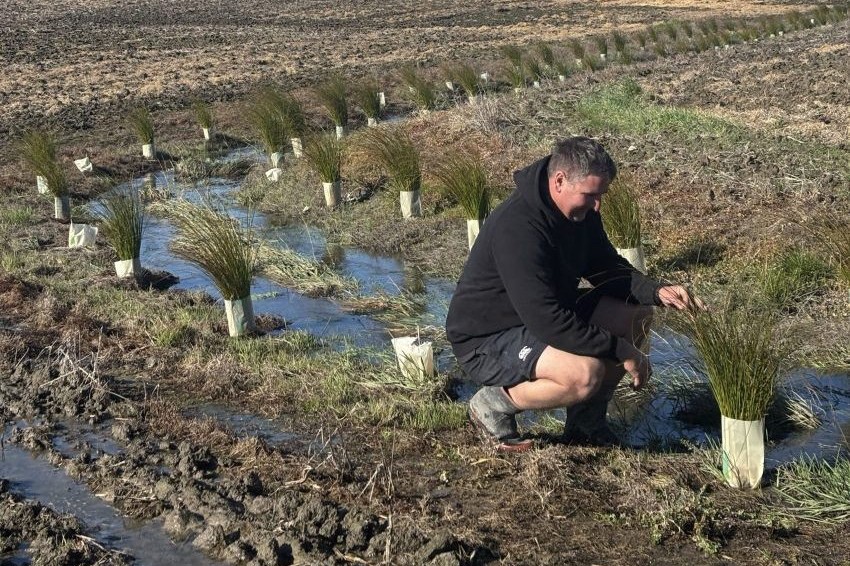BY: JOANNA CUTTANCE
The Otago Regional Council wants to help farmers achieve compliance with the new national environmental standards.
The council’s regulatory general manager, Richard Saunders said to do this it would work with the community in a collaborative and educational way.
As a regulator, the ORC had a statutory responsibility to ensure the rules contained within the new national standards were met, and the organisation had been speaking to their farming communities to understand which areas were of most concern.
One was how the rule around pugging would be enforced. The rule states, pugging which means the penetration of soil of more than 5cm is to be no deeper than 20cm and must cover less than 50% of the paddock (this does not apply around fixed structures).
Saunders says pugging could be checked as part of routine on farm compliance monitoring or as a result of a complaint being received. ORC staff would always have a discussion with the farmer concerned to identify any potential issues and most importantly identify whether there is likely to be any environmental effects from pugging identified on site.
“An education first approach will be taken and ORC will work with farmers and landowners to identify the reasons non-compliance may be occurring and how it could be avoided in the future,” Saunders says.
Consents for winter grazing will be able to be lodged early in 2021. Saunders says the length of time a consent would be granted for would depend on the application. He encourages farmers to apply for multiple years and for the whole farm within the one consent. More details about the information required to support an application would be on the ORC website later this year.
“If a consent cannot be granted a staff member will discuss the reasons why and talk through options to make amendments to the application. If it is determined that a consent is required but has not been applied for, it is expected that a consent application will be made,” he says.
The ORC is looking at options to be more efficient with the resources they had, when it came to monitoring farms. This may include using drones although this was yet to be confirmed.
If drones are used in the future it would be on the basis that landowners would be notified and the reasons for the visit explained. For example, it might be possible to monitor a number of winter grazing paddocks for compliance much more quickly and efficiently with a drone. The compliance monitoring would be carried out by a staff member in consultation with the consent holder.
Another option to be considered was more frequent use of fixed wing planes. The ORC undertook this once a year but this number was likely to increase in future.
It is unlikely ORC would have the resources to visit every farm but they would be trying to visit as many as possible. Where a consent had been issued and an inspection was occurring, the farmer would need to have a copy of the consent ready, along with any relevant information to demonstrate that the conditions of the consent were being complied with. Where the visit is the result of a complaint, it is likely there would be a phone call ahead of the visit, Saunders says.
“Often a complaint can be due to a lack of understanding of the rules from the caller. This can sometimes be clarified over the phone and not require a follow up visit,” he says.
If a site visit is required, Saunders encourages farmers to work with the ORC staff member to discuss any issues and whether changes to management practices need to occur.
The ORC is trying to provide as much detailed guidance as possible to give farmers confidence when making assessments about their land and fact sheets and frequently asked questions are being developed to assist people to interpret the new rules. Consistency is crucial, he says.
‘An education first approach will be taken and ORC will work with farmers and landowners to identify the reasons non-compliance may be occurring and how it could be avoided in the future.’
For the grey areas, like identifying some waterways, in cases where it might not be absolutely clear, a conversation with an ORC staff member should help to resolve any outstanding issues and give farmers some confidence around how the rules would be applied.
The whole ORC regulatory team of 40 members, visited a South Otago sheep and beef farm, and a dairy farm, in October, for an onfarm training day to help visualise the effects the new standards would have on farmers.
“We know there is a lot of additional work coming for both ourselves and our farming community.”
He appreciated the changes would be felt more acutely in Otago than that of some other regions because of the ORC previous plan framework.
“We want to make sure our processes are easy to follow and information is easy to find,” Saunders says.
One of the things identified was the need to add additional resources to the ORC team. In particular, consent planners and compliance officers. Saunders says they had advertised for a number of roles already but there was likely to be further opportunities in the future.
“We are particularly interested in applicants who had experience working in the rural sector.”
- For more information about the National Environmental Standards see www.orc.govt.nz/managing-our-environment/water/new-water-rules





